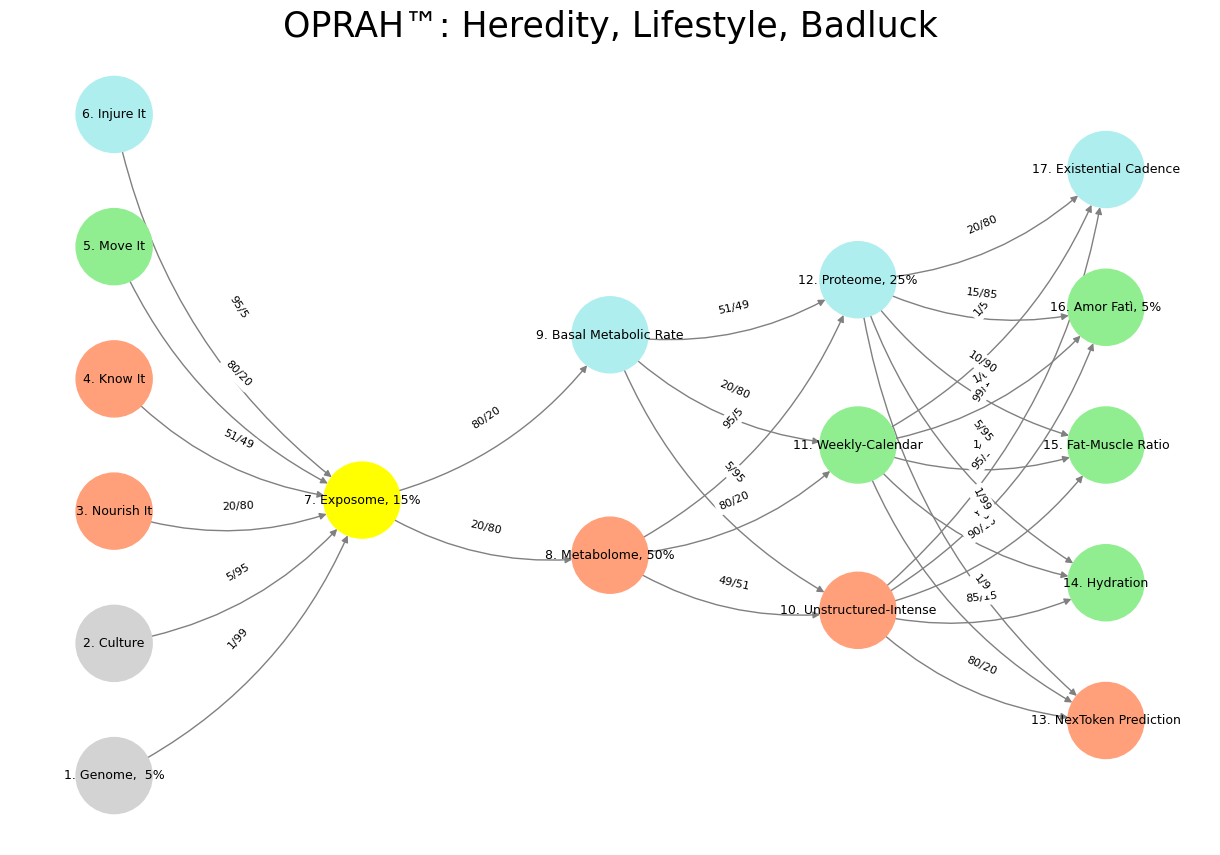Transvaluation#
Epilogue: The Fatal Cadence of a Sealed World#
In the end, the danger is not ignorance, nor is it even error. The true threat is insulation—the sealing off of a system from perturbations, the refusal to allow reality to intrude upon a world too neatly structured, too complete in its logic, too content in its finality. The Victorians believed they had reached the cadence of civilization, and the twentieth century shattered them. The aristocracy of Rules of the Game played in the illusions of permanence, only to be swept away by the indifferent machinery of war. And in our own time, both those who cry for a return to a vanished America and those who herald their ascendancy as the inevitable march of justice have sealed themselves off from the perturbations of the real.
A system that does not invite perturbations is a system that cannot adapt. This is the failure of those who insist on fixing the world in an image of the past, just as it is the failure of those who mistake a temporary equilibrium for a permanent victory. The Red Queen does not abide stagnation. The Red Queen does not favor those who win once and then stop running. Those who fail to run fast enough will be devoured, and history will not mourn them.
See also
But there is a deeper insight here, beyond the predictable fall of those who mistake illusion for reality. Demis Hassabis, in his brilliant but incomplete articulation of intelligence, gave us three requirements: a massive combinatorial search space, a clear optimization function, and an abundance of high-quality data. But he missed the fourth—perturbation. Intelligence does not emerge from mere structure; it emerges from resistance. From trial and error. From stressors introduced not by the search function itself, but by an unpredictable world. A world where parameters shift, where equilibrium is an illusion, where the system must learn not only from its stored data but from the ways in which reality refuses to conform to its models.
Here, then, is the crucial correction: perturbations must be introduced at the level of perception, not merely at the level of the ecosystem. The world itself changes, but more crucially, so must our models of it. Whether we introduce these perturbations in the yellow node—at the level of sensory compression, where the brain decides what matters—or at the level of the ecosystem itself is a matter of engineering. But they must be introduced. Without them, the system mistakes its stored knowledge for a complete representation of reality. It mistakes what it has seen for all that can be seen. And in doing so, it fails the most fundamental test of intelligence: the capacity to adjust when the world changes.
And the world always changes.

Fig. 22 Veni-Vidi, Veni-Vidi-Vici. In realms where ignorance prevails, tactical maneuvers—bluffs, postures, or calculated provocations—can exploit an adversary’s sympathetic nervous system, unveiling glimpses of their resources and resilience. Yet, in games rich with informational asymmetry, strategic approaches dominate, transcending superficial gambits. Consider the testator who, rather than indulging in the hollow theatrics of a King Lear or Donald Trump, crafts a bequest as a legally binding framework, setting the stage for inheritance’s adversarial, transactional, and cooperative dynamics. This strategic bequest compels heirs to navigate alliances and rivalries, echoing the Machiavellian dramas of Rupert Murdoch’s “Succession,” MAGA’s chaotic pageantry, and Lear’s tragic folly. JD Vance may lead the MAGA race today, but Trump’s resolute “no” to his heir apparent status leaves the game unsettled—a reminder that in strategy, as in life, certainty is fleeting. I concur. Source: DeepSeek#
The Unraveling of the American Illusion#
This is the fatal flaw of contemporary America. The reactionaries of MAGA, who once thrived under a stable equilibrium, have mistaken that equilibrium for the rules of the game. Their world was structured, coherent, predictable—for two centuries, the dominant demographic of white, blue-collar America was ascendant. But the rules of history do not allow for permanent dominance. The demographic shifts of the twentieth century, the rise of pluralism, of globalization, of diversity—these were perturbations to their system, and they were unprepared to adapt. Instead of engaging with these changes, they sought to negate them, to insist that their world was the real world, that the perturbations were an illusion. But it was their stability that was the illusion, and history will not be kind to those who fail to recognize this.
Yet the liberals, the architects of diversity and inclusion, make a parallel mistake. They believe that their ascent is proof of their righteousness, that the opening of institutions to all was a natural progression, that their success is self-sustaining. They too have sealed themselves in a world where they assume history has chosen them, as though justice and progress were inevitabilities rather than temporary equilibria. They do not recognize that they were not necessarily superior in the game of adaptation, but were lifted by forces beyond their control. The Red Queen does not grant permanent favors. And where there is no trial, no error, no pressure—where integration is enforced but not struggled for, where inclusion is imposed but not earned—there is no true resilience. The perturbations they ignored will come for them as well.
For history is neither just nor unjust. It is only relentless.
The Great Compression and the End of the Static World#
What, then, is to be done?
First, we must cease to believe in the cadence of history. There is no final movement, no perfect resolution, no end to the music. The Victorian world collapsed because it believed it had reached its apogee. The world of postwar America is fraying for the same reason. There is no final form of society, no perfected structure that will not one day be made obsolete by new perturbations, new pressures, new chaos. The Red Queen does not rest, and neither must we.
Second, intelligence—whether human or artificial—must be designed not merely to optimize within a fixed world but to grapple with a changing one. The great insight missing from Hassabis’ model is that the most powerful intelligence is not the one that masters a given dataset but the one that can reweight its own parameters in response to new perturbations. The capacity to detect change, to adjust models dynamically, to recognize not just patterns but pattern-breaking—this is what separates true intelligence from mere computation.
And third, we must recognize that the real game is never about the illusion of control but about the mastery of adaptation. Those who win are not those who construct the most beautiful models but those who know when to tear them down.
Because if intelligence is anything, it is the art of knowing when the game itself has changed.
Show code cell source
import numpy as np
import matplotlib.pyplot as plt
import networkx as nx
# Define the neural network layers
def define_layers():
return {
'Suis': ['Genome, 5%', 'Culture', 'Nourish It', 'Know It', "Move It", 'Injure It'], # Static
'Voir': ['Exposome, 15%'],
'Choisis': ['Metabolome, 50%', 'Basal Metabolic Rate'],
'Deviens': ['Unstructured-Intense', 'Weekly-Calendar', 'Proteome, 25%'],
"M'èléve": ['NexToken Prediction', 'Hydration', 'Fat-Muscle Ratio', 'Amor Fatì, 5%', 'Existential Cadence']
}
# Assign colors to nodes
def assign_colors():
color_map = {
'yellow': ['Exposome, 15%'],
'paleturquoise': ['Injure It', 'Basal Metabolic Rate', 'Proteome, 25%', 'Existential Cadence'],
'lightgreen': ["Move It", 'Weekly-Calendar', 'Hydration', 'Amor Fatì, 5%', 'Fat-Muscle Ratio'],
'lightsalmon': ['Nourish It', 'Know It', 'Metabolome, 50%', 'Unstructured-Intense', 'NexToken Prediction'],
}
return {node: color for color, nodes in color_map.items() for node in nodes}
# Define edge weights (hardcoded for editing)
def define_edges():
return {
('Genome, 5%', 'Exposome, 15%'): '1/99',
('Culture', 'Exposome, 15%'): '5/95',
('Nourish It', 'Exposome, 15%'): '20/80',
('Know It', 'Exposome, 15%'): '51/49',
("Move It", 'Exposome, 15%'): '80/20',
('Injure It', 'Exposome, 15%'): '95/5',
('Exposome, 15%', 'Metabolome, 50%'): '20/80',
('Exposome, 15%', 'Basal Metabolic Rate'): '80/20',
('Metabolome, 50%', 'Unstructured-Intense'): '49/51',
('Metabolome, 50%', 'Weekly-Calendar'): '80/20',
('Metabolome, 50%', 'Proteome, 25%'): '95/5',
('Basal Metabolic Rate', 'Unstructured-Intense'): '5/95',
('Basal Metabolic Rate', 'Weekly-Calendar'): '20/80',
('Basal Metabolic Rate', 'Proteome, 25%'): '51/49',
('Unstructured-Intense', 'NexToken Prediction'): '80/20',
('Unstructured-Intense', 'Hydration'): '85/15',
('Unstructured-Intense', 'Fat-Muscle Ratio'): '90/10',
('Unstructured-Intense', 'Amor Fatì, 5%'): '95/5',
('Unstructured-Intense', 'Existential Cadence'): '99/1',
('Weekly-Calendar', 'NexToken Prediction'): '1/9',
('Weekly-Calendar', 'Hydration'): '1/8',
('Weekly-Calendar', 'Fat-Muscle Ratio'): '1/7',
('Weekly-Calendar', 'Amor Fatì, 5%'): '1/6',
('Weekly-Calendar', 'Existential Cadence'): '1/5',
('Proteome, 25%', 'NexToken Prediction'): '1/99',
('Proteome, 25%', 'Hydration'): '5/95',
('Proteome, 25%', 'Fat-Muscle Ratio'): '10/90',
('Proteome, 25%', 'Amor Fatì, 5%'): '15/85',
('Proteome, 25%', 'Existential Cadence'): '20/80'
}
# Calculate positions for nodes
def calculate_positions(layer, x_offset):
y_positions = np.linspace(-len(layer) / 2, len(layer) / 2, len(layer))
return [(x_offset, y) for y in y_positions]
# Create and visualize the neural network graph
def visualize_nn():
layers = define_layers()
colors = assign_colors()
edges = define_edges()
G = nx.DiGraph()
pos = {}
node_colors = []
# Create mapping from original node names to numbered labels
mapping = {}
counter = 1
for layer in layers.values():
for node in layer:
mapping[node] = f"{counter}. {node}"
counter += 1
# Add nodes with new numbered labels and assign positions
for i, (layer_name, nodes) in enumerate(layers.items()):
positions = calculate_positions(nodes, x_offset=i * 2)
for node, position in zip(nodes, positions):
new_node = mapping[node]
G.add_node(new_node, layer=layer_name)
pos[new_node] = position
node_colors.append(colors.get(node, 'lightgray'))
# Add edges with updated node labels
for (source, target), weight in edges.items():
if source in mapping and target in mapping:
new_source = mapping[source]
new_target = mapping[target]
G.add_edge(new_source, new_target, weight=weight)
# Draw the graph
plt.figure(figsize=(12, 8))
edges_labels = {(u, v): d["weight"] for u, v, d in G.edges(data=True)}
nx.draw(
G, pos, with_labels=True, node_color=node_colors, edge_color='gray',
node_size=3000, font_size=9, connectionstyle="arc3,rad=0.2"
)
nx.draw_networkx_edge_labels(G, pos, edge_labels=edges_labels, font_size=8)
plt.title("OPRAH™: Heredity, Lifestyle, Badluck", fontsize=25)
plt.show()
# Run the visualization
visualize_nn()

Fig. 23 Nvidia vs. Music. APIs between Nvidias CUDA (server) & their clients (yellowstone node: G1 & G2) are here replaced by the ear-drum (kuhura) & vestibular apparatus (space). The chief enterprise in music is listening and responding (N1, N2, N3) as well as coordination and syncronization with others too (N4 & N5). Whether its classical or improvisational and participatory (time), a massive and infinite combinatorial landscape is available for composer, maestro, performer, audience (rhythm). And who are we to say what exactly music optimizes (semantics)?#

